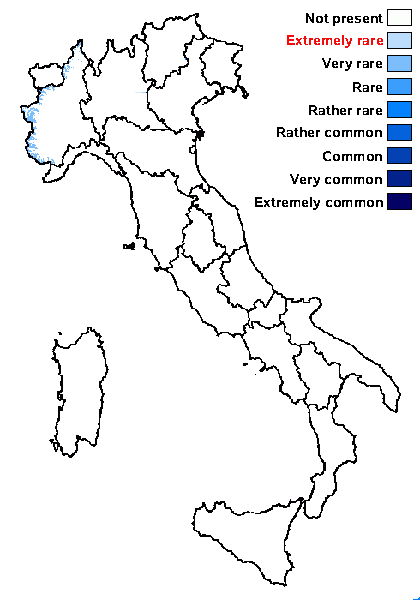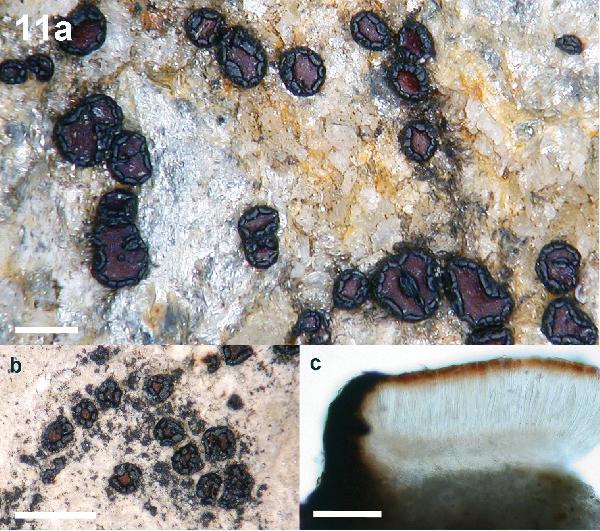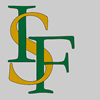Sarcogyne algoviae H. Magn.
Rabenh. Krypt.-Flora, 9, 5, 1: 57, 1935.
Synonyms: Biatorella algoviae (H. Magn.) Zahlbr.
Distribution: N - Piem (TSB 34087).
Description: Thallus crustose, endosubstratic, inapparent. Apothecia lecideine, 0.3-1.3(-1.8) mm across, at first immersed, then sessile, with a brown to reddish brown, epruinose disc which often has one or two small carbonized accretions on the surface and an undulate, raised, often glossy proper margin, usually divided by cracks into 5–15 segments. Proper exciple black and carbonized in outer part, paler within, not extending below the hymenium; epithecium brown-black; hymenium colourless, 56-105 µm high; paraphyses simple or sparingly branched in upper part, 1-1.5 µm thick at mid-level, capitate; hypothecium pale. Asci >100-spored, cylindrical-clavate, strongly thickened at apex, the apical dome K/I–, the outer coat K/I+ blue. Ascospores 1-celled, hyaline, narrowly ellipsoid, 2.5-4 x 1-1.5 µm. Photobiont chlorococcoid. Spot tests: K-, C-, KC-, P-, UV-. Chemistry: without lichen substances.Note: on weakly calciferous rocks in sunny situations, with optimum above treeline, reaching the nival belt in the Alps. For further details see Westberg & al. (2015).
Growth form: Crustose endolithic
Substrata: rocks
Photobiont: green algae other than Trentepohlia
Reproductive strategy: mainly sexual
Commonnes-rarity: (info)
Alpine belt: very rare
Subalpine belt: absent
Oromediterranean belt: absent
Montane belt: absent
Submediterranean belt: absent
Padanian area: absent
Humid submediterranean belt: absent
Humid mediterranean belt: absent
Dry mediterranean belt: absent

Predictive model
Herbarium samples

Source: Westberg M, Timdal E, Asplund J, Bendiksby M, Haugan R, Jonsson F, Larsson P, Odelvik G, Wedin M, Millanes AM (2015) New records of lichenized and lichenicolous fungi in Scandinavia. MycoKeys 11: 33-61. - CC BY-4.0
Sarcogyne algoviae. a Apothecia (S F122537) b Apothecia (S L2741, holotype) c Section of an apothecium showing a strongly carbonized margin and a colourless hypothecium (S F122537). Scale: 1 mm (a–b); 100 µm (c).
Growth form: Crustose endolithic
Substrata: rocks
Photobiont: green algae other than Trentepohlia
Reproductive strategy: mainly sexual
Commonnes-rarity: (info)
Alpine belt: very rare
Subalpine belt: absent
Oromediterranean belt: absent
Montane belt: absent
Submediterranean belt: absent
Padanian area: absent
Humid submediterranean belt: absent
Humid mediterranean belt: absent
Dry mediterranean belt: absent

Predictive model
| Herbarium samples |

 INDEX FUNGORUM
INDEX FUNGORUM
 GBIF
GBIF

